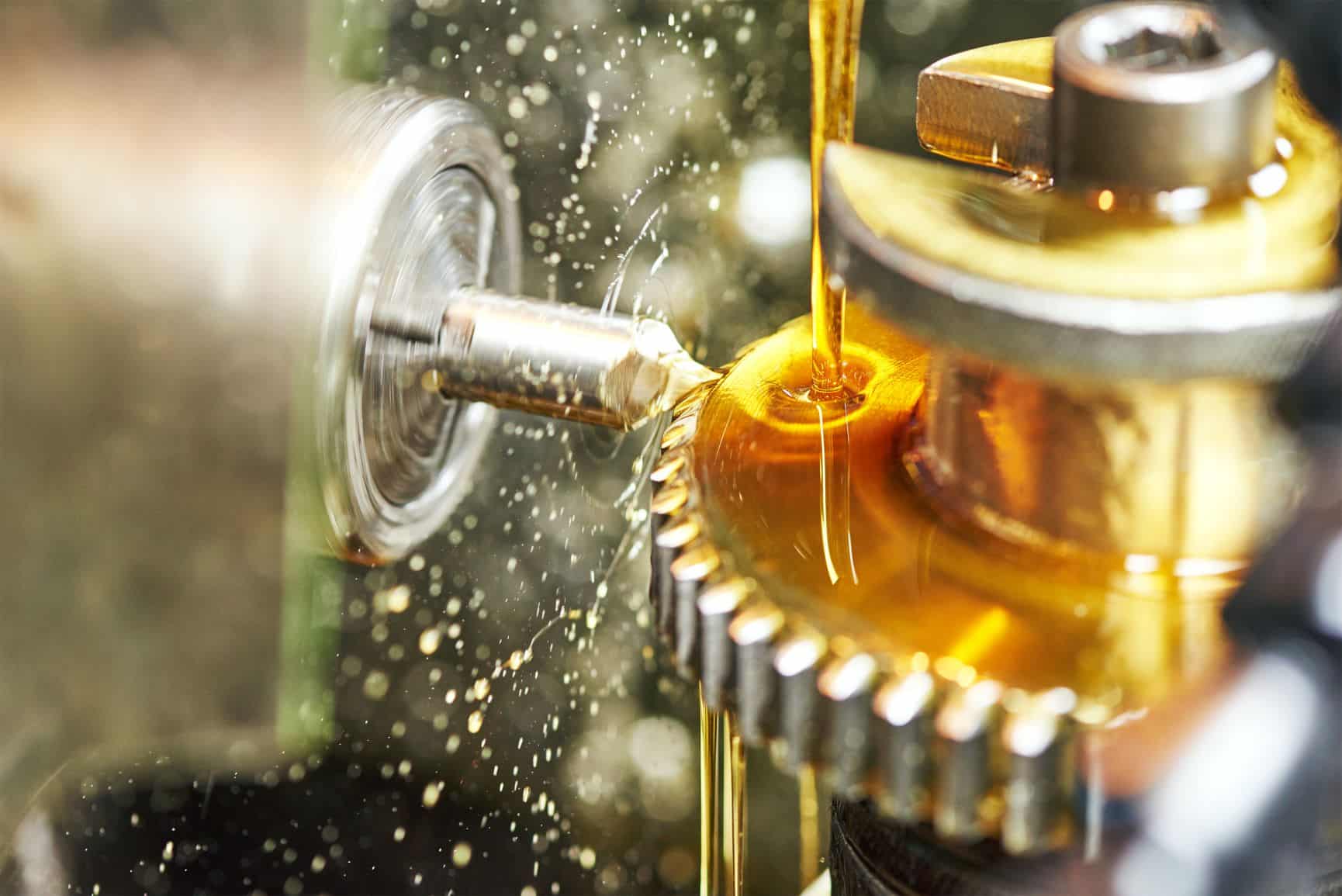Machine lubrication should play a role in any maintenance strategy, with the potential to yield a significant return on investment in materials and resources. What is machine lubrication? It is the practice of introducing a lubricating agent — almost always an oil — into machine components to achieve several goals:
- Reduce friction
- Lower component and operating temperatures
- Wick away debris and contaminants
Lubrication is critical for, essentially, any moving parts that encounter one another in a machine. Most frequently, these are rotating parts and components such as gears. Machine lubricant is designed to prevent:
- Undue wear and tear on components
- Premature failure of components
- Excessive unplanned maintenance
- Equipment overheating
- Part seizure
In this piece, we will take an in-depth look at machine lubricants, the purposes of lubrication, the benefits it can provide and how it can help you.
Lubricating machinery: An in-depth look
There are generally two major fallacies about lubricating machinery: 1) that it is a simple process, and 2) that it is optional or “as-needed.” Both are false. While the concept of lubrication is relatively simple, it is a technical process that must be considered and treated as such to yield the greatest benefits. Lubrication should also be considered a mandatory part of a comprehensive maintenance program. When both points of view are accepted, a lubrication strategy may provide you with major ROI in uptime, equipment service life, part quality and more.
How does lubrication work? We can consider three primary parts of the process:
- Lubrication delivery (i.e., how a lubricant is applied to the parts in need)
- Lubrication operation (the action and benefits of lubricant once it is applied)
- Lubrication maintenance (regular checking and replacement of lubricant)
The concept of lubrication is related to that of friction. Friction is a force generated when two objects move against one another — think of one gear interacting with another. This force converts kinetic energy (movement) into thermal energy (heat), which can quickly become a significant level of heat at high speed and frequency. Lubrication introduces another element or medium into the friction equation to transfer heat away from the point of friction. It plays several other roles, as well.
These roles include:
- Part wear reduction: As parts move against each other, contact points begin to erode. Lubrication provides a buffer against this raw wear.
- Shock absorption: Lubricant can dilute the impact and effect of shock and vibration on parts, further reducing wear while maintaining proper, consistent operation.
- Corrosion reduction: Lubricant protects metal surfaces from environmental elements that can lead to corrosion.
- Drawing debris and contaminants away from moving parts: As moving parts come into contact with each other, they begin to erode. The pieces of debris that form because of this can then lead to further friction and erosion. Lubrication serves to move these tiny (and large) contaminants away from moving parts to reduce further damage.
- Friction and heat reduction: Already mentioned above, these functions are the primary role of lubrication, and should be reiterated. By reducing friction forces and the heat that they generate, machinery lubrication can reduce wear and tear, lower the chances of significant component or equipment damage, and yield equipment performance improvements such as increased uptime and less maintenance.
What are machine lubricants made of?
Mechanical lubricants are made of oil. In the case of manufacturing and industrial equipment, this typically is either mineral oil (created from crude oil) or synthetic oil (formulations manufactured in a lab). It is in this area that one of the lubrication fallacies takes hold: that lubrication is the simple application of a machine lubricant.
In fact, there are numerous choices and options for lubrication — not only whether to use mineral or synthetic oil for machines, but what type of formulation to use. There is a vast range of formulation options depending upon type of equipment, operation environment, application, usage and more.
What types of machines need lubrication?
In general, any equipment with rotating or moving parts that come into contact with one another can benefit from lubrication. These include gears, rotors, stators and more.
When should lubrication occur?
Lubrication should occur on a regularly planned and scheduled basis as part of an overall maintenance strategy. The schedule can be based on usage and wear patterns, but in general, lubricant checks should be part of a standard preventive maintenance checklist, so that a part can be replaced before it wears out. Lubrication should also occur upon the introduction of any new equipment or components, as well as after equipment repairs and major maintenance.
The benefits of lubrication
Lubrication of machinery provides numerous benefits, including:
- Longer component and equipment service life: By reducing friction and heat — and thus wear and tear — lubrication allows equipment and components to remain in an optimal operational state for a longer period of time. By helping components to remain intact and closer to their “out of the box” form, the time between breakdown and replacement requirements will be extended, improving OEE and reducing overall costs.
- Reduced maintenance needs: With less wear and tear comes less potential for breakdown. Parts that are operating with high friction and high heat are susceptible to unexpected failure and breakdown at just about any time, regardless of the age of the component. Proper lubrication keeps equipment operating at an acceptable temperature and friction level, vastly reducing the potential for unexpected maintenance requirements.
- Higher part quality: Lubrication allows for more consistent operation by helping to absorb shock and vibration and keep equipment running as expected. This translates to increased repeatability and quality in part production, creating fewer rejects and a higher productivity yield.
- Safer operations: Any time equipment is operating at a high level of heat and with increased vibration — as would be the case in unlubricated or insufficiently lubricated equipment — there is a potential for catastrophic failure, which can create a danger to equipment operators and other employees. Proper lubrication is critical to a safe working environment.
Who benefits from lubricating equipment?
Nearly any piece of equipment across manufacturing and industry can benefit from lubrication. Some of the key industries where this is especially true are:
- Aerospace
- Automotive
- Building Products
- Consumer Packaged Goods
- Heavy Equipment
- Metal Products
- Paper & Pulp
- Pharmaceutical & Medical Devices
- Power Distribution
- Tire and Rubber
Common lubrication challenges
Understanding how to mitigate some of the most commonly encountered challenges with lubrication can ensure you get the highest levels of performance and efficiency. For example, proper storage and handling can prevent dirt and moisture from contaminating your lubricants. This is essential for prolonging their efficacy and longevity. It’s also important to know exactly how much lubricant to use in any given application. Under-lubricating puts unnecessary wear on your components, while over-lubricating is a waste of resources and could have a negative impact on the operation of your equipment. We recommend reviewing the manufacturer’s recommendations as closely as possible to make sure you don’t fall into the trap of misusing or mishandling your lubricants.
Machinery lubrication services from ATS
At ATS, we provide machinery lubrication services as one of our maintenance services. We can assist you with:
- Lubricant selection and formulation
- Lubricant testing, including advanced testing technology such as ultrasonic testing
- Lubricant replacement
- Wear and vibration testing to identify and target areas that could benefit the most from lubrication
- Lubricant handling, organization, labeling and storage
To learn more about how we can help you achieve the OEE and maintenance benefits of lubrication, contact ATS today.






